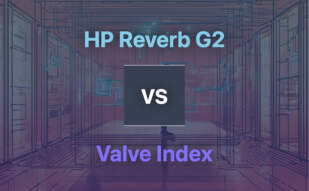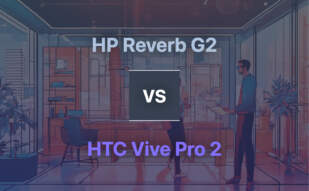HP Reverb G2 is a virtual reality headset designed for professional use, featuring a revamped design with improved comfort and tracking. It offers a high-resolution display and camera-based tracking system without the need for external sensors. Compatible with SteamVR and Windows Mixed Reality platforms, it provides a simple setup process and works with various VR software.

Seeking alternatives to HP Reverb G2? Consider Valve Index, HTC Vive Pro 2, Oculus Quest 2, Vive Pro, HP Omnicept, Pimax Crystal, PSVR 2, and more for diverse VR experiences.
Valve Index

A product of Valve’s in-house design and manufacturing, the Valve Index is a second-generation, consumer-level virtual reality (VR) headset. Launched on June 28, 2019, the headset quickly became a crowd favorite with 149,000 sets sold, largely due to the Half-Life: Alyx announcement.
Valve Index Top Features
- Dual 1440 x 1600 RGB LCDs offer 50% more subpixels than OLED, boosting image sharpness.
- Fine-tuned lenses expand Field of View (FOV) by 20 degrees compared to HTC Vive. It also offers adjustable optics for user customization.
- Enjoy optical comfort for extended play sessions with frame rates of 80/90/120/144Hz.
| Tracking | SteamVR 2.0 sensors, compatible with SteamVR 1.0 and 2.0 base stations. It is also compatible with HTC Vive and Vive Pro Controllers. |
| Audio | Off-ear audio solution offering better comfort, adjustable speaker positioning, and ultra-nearfield flat panel speakers designed for a variety of ear and head shapes. |
| Ergonomics | Adjustments available for head size, face angle, eye relief (FOV), and IPD, with antimicrobial fabric on all contact surfaces. |
Valve Index Limitations
- No eye tracking technology available, thus losing out on possible immersive experiences.
- Relatively expensive, starting at $799 for headset only, and scaling up to $999 for the full kit.
- The room-scale sensor setup can be a bit frustrating for users.
Valve Index Pricing
Initially priced at $999, the Valve Index headset now stands at $799, while the full kit can be acquired for its introductory price of $999.
Valve Index Use Cases
Use Case 1: High-End Gaming
With its high-resolution display and superior frame rates, Valve Index is an ideal choice for gamers seeking immersive experiences and long play sessions.
Use Case 2: Developers
Developers creating VR content would greatly benefit from the high-resolution, frame rate, and field of view that the Valve Index provides, helping them craft more realistic environments and experiences.
Use Case 3: Simulation
With the high FOV and tracking capabilities, using Valve Index in simulation scenarios, like healthcare and vocational training, can lead to more realistic training experiences.
Cosmos Elite
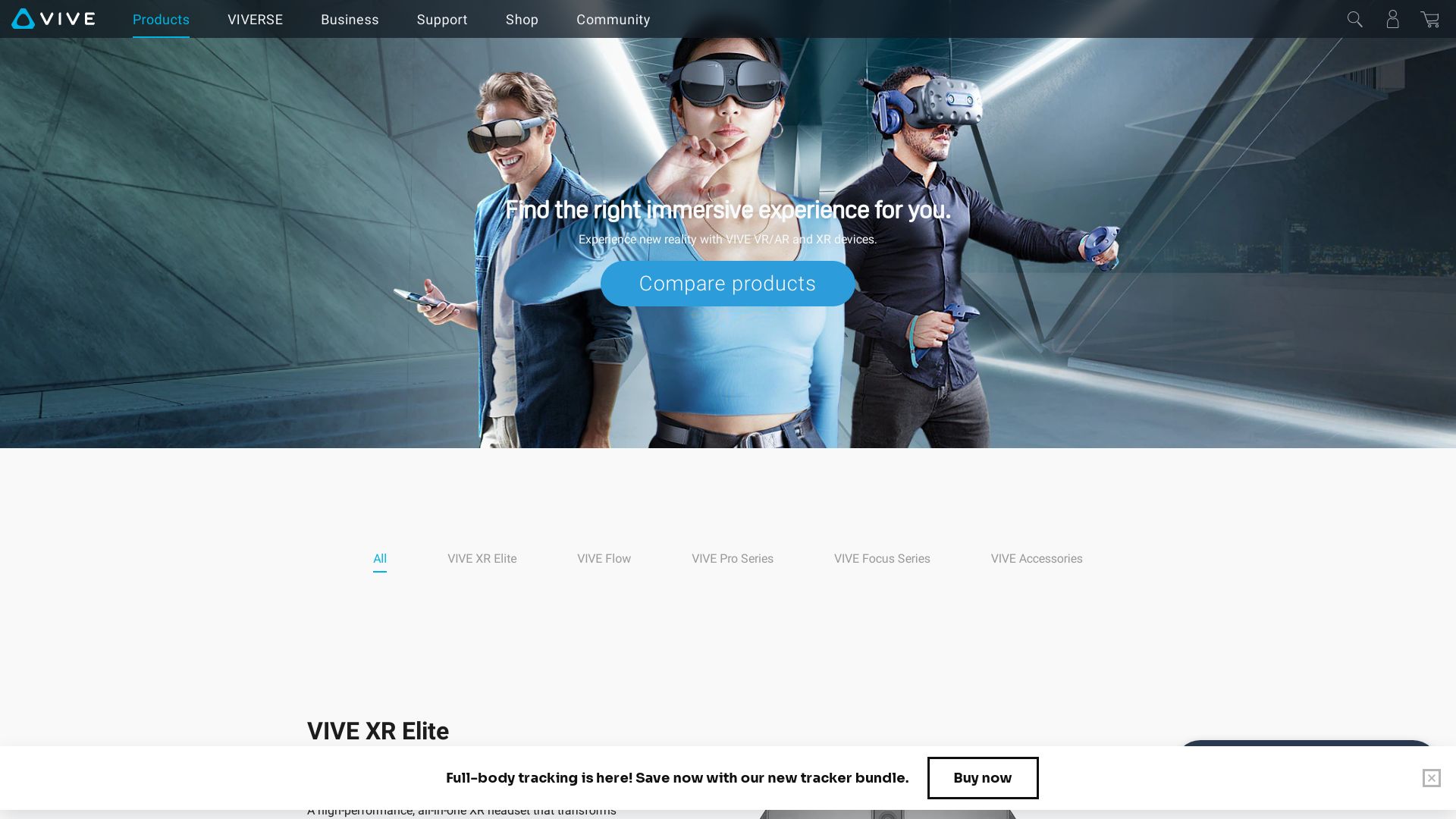
Immerse yourself into the premium VR world with the Cosmos Elite, a standout offering from HTC Vive that weaves power, comfort, and versatility aptly.
Cosmos Elite Top Features
- Comfort prioritized through adjustable features, soft padding, and dial-in for fit tightness.
- Empowered by dual high-res 1440-pixel display panels.
- Quick, uncomplicated exit from VR with a flip-up front panel.
- Built-in headphones ensuring easy game audio and voice chat.
- Excellent build quality targeting PC-based VR.
| FEATURE | DETAILS |
|---|---|
| Graphic Rendering | Tested successful performance with powerful PC & RTX 2070 graphics card |
| Special Specs | Dual 3.4” LCD screens, max 110-degree field of view |
Cosmos Elite Limitations
- Requires considerable space and struggles with imperfect controller tracking.
- Challenges during setup due to cumbersome cables and space prerequisites.
- Sound quality of the built-in headphones can be improved.
- Demanding setup and prior VR knowledge needed.
Cosmos Elite Pricing
At a price tag of $899/£899, Cosmos Elite holds impactful features that justify its pricing in comparison to its competitors like Oculus Quest 2.
Cosmos Elite Use Cases
Use case 1
Thanks to its high-res display panels and powerful performance, the Cosmos Elite proves an ideal pick for intense VR games like Half-Life: Alyx and Beat Saber.
Use case 2
If you’re engaged in graphic design or productivity software, the performance power of Cosmos Elite, coupled with its flexible comfort features, will enhance your VR experiences.
Use case 3
Cosmos Elite’s flip-up feature and built-in voice chat functionality add new dimensions to social VR experiences, transforming platforms like Rec Room into highly engaging virtual spaces.
Quest 3
The Meta Quest 3 is the world’s first mass-market mixed reality headset designed to transform immersive experiences. With significant improvements over its predecessor, the Quest 2, this cutting-edge headset leapfrogs in terms of graphics, audio, and overall user experience.
Quest 3 Best Features
- Spatial awareness: Enables interactive experiences with virtual elements overlaid on the physical environment.
- 4K+ Infinite Display: Offers 30% leap in resolution compared to Meta Quest 2, a detail count of 25 pixels per degree, and 1,218 pixels per inch.
- Enhanced sound clarity and bass performance: Provides 40% louder audio range compared to Quest 2.
- Slimmer yet balanced: More balanced weight distribution with a redesigned, sleeker profile.
- Updated controllers and comfortable lenses: The advanced “pancake lenses” and improved controllers, make gaming far more immersive and interactive.
| Mixed Reality Experiences | Offers fitness training with Xponential+, sports-viewing with Xtadium & multiplayer gaming with shared spatial anchors. |
| Backwards compatibility | Can play Quest 2 titles; over 100 new and updated titles on the way. |
| Advanced Mixed Reality Technology | Full-color passthrough, spatial mapping, & ‘augments’ for decoration. |
Quest 3 Downside
- Although boosted with multiple features, the price might be perceived as steep by some potential buyers.
- The availability of “augments” or mixed reality widgets for decoration might be limited initially.
Quest 3 Pricing
Meta Quest 3 is available in two models – 128GB priced at $499.99 and 512GB priced at $649.99. Early buyers get Asgard’s Wrath 2 free, with the 512GB purchasers receiving a six-month subscription to Meta Quest Plus.
Quest 3 Use Cases
Use case 1: Gaming
Quest 3 elevates gaming experiences with its spatial awareness feature, allowing for interactive entertainment like augmented reality board games, such as Demeo.
Use case 2: Fitness Training
The headset offers fitness enthusiasts an interactive workout experience with programs such as Xponential+, integrating virtual elements into the physical space.
Use case 3: Online Collaboration
For remote teams and businesses, the Quest 3’s advanced mixed reality technology can simulate shared digital environments, increasing communication, collaboration, and productivity.
Rift S
Born from a partnership between Facebook Technologies and Lenovo, Rift S is an augmented reality VR headset that launched in 2019 as the successor to the original Oculus Rift. It has garnered mixed reviews, been praised for its comfort and ease of setup but criticized for being only an incremental upgrade over the original device.
Rift S Top Features
- Oculus Insight tracking technology for immersive gaming.
- Five built-in cameras (2 front, 1 top, 2 sides) for precise room-scale tracking.
- Next-generation lens technology that eliminates god rays.
- Honorary field of view of 115° to widen the user’s visual coverage.
| Display | 2560×1440 (1280×1440 per eye) at 80Hz refresh rate |
| Compatibility | Compatible with Oculus Store, Viveport store, and Steam VR. |
| Weight | 1.1 lb without cable, thus, extremely portable for mobile gaming. |
Rift S Limitations
- Only an incremental upgrade over the original Oculus Rift. Lacks substantial improvements, inviting criticism.
- Ceased production in June 2021. That may impact the customer support and availability of the product.
- While integrated speakers are included, they might not be everyone’s preference, leading users to depend on the 3.5mm stereo headphone jack.
Rift S Pricing
The Rift S was originally priced at $399. However, as the production ceased in 2021, the current price might vary based on availability.
Rift S Use Cases
Use case 1: Hardcore Gamers
The Rift S makes a powerful option for hardcore gamers seeking high-resolution display and immersive gaming experiences. It’s compatibility with top gaming stores like Oculus Store, Viverport Store, and Steam VR adds to its appeal.
Use case 2: VR Enthusiast
For those intrigued by the advancements of VR tech, the Oculus “gold standard”, the Rift S offers a sophisticated and deluxe option. The 5m tether cable and fast-switch LCD panel technology enhances the user’s experience.
Use case 3: Casual or New Users
If comfort and simplicity is what you seek, the Rift S won’t disappoint. It has a comfort-optimized Lenovo designed halo headband and facilitates easy software updates and access to a variety of games and VR content.
Pico 4 Pro
The Pico 4 Pro is an impressive standalone VR headset that notably contends with the Quest 2 in terms of pricing and feature content. The first consumer VR endeavor by Pico, with ByteDance as its current parent company, the Pico 4 Pro expands effortlessly into the enterprise market.
Pico 4 Pro Top Features
- Superior hardware specifications including Qualcomm’s Snapdragon XR2 processor for an efficient VR experience.
- High-resolution 2,160 × 2,160 (4.7MP) per-eye display, providing sharp, clear images.
- Compact form factor with rear-mounted battery for balanced usage.
| Feature | Specification |
|---|---|
| Storage Space | 128GB & 256GB |
| RAM | 8GB |
| Processor | Qualcomm Snapdragon XR2 |
Pico 4 Pro Limitations
- Limited hand-tracking functionality may impact the gestural interaction.
- No explicit design for augmented or mixed reality usage.
- Software compatibility restricted to Quest 2, with limited titles optimized for Quest 3.
Pico 4 Pro Pricing
With competitive pricing options, the Pico 4 Pro starts at €430 for the 128GB model and extends up to €500 for the 256GB variant.
Pico 4 Pro Use Cases
Enterprise VR Solutions
With robust hardware specifications and custom enterprise-targeted features (device management software, tailored custom app stores etc.), the Pico 4 Pro proves to be a compelling VR solution for the business environment.
High-Resolution VR Gaming
Boasting a higher per-eye resolution than the Quest 2 and equipped with Snapdragon XR2 processor, the Pico 4 Pro presents a persuasive choice for immersive VR gaming.
VR Content Consumers
With content aspirations clear from its competitive pricing approach, the Pico 4 Pro appeals to VR content consumers looking for superior visual performance without a hefty price tag.
Pico 4 Enterprise
In the realm of VR hardware, the Pico 4 Enterprise emerges as a powerful player specifically designed for business and enterprise use. Launched by Pico, a veteran in the VR industry since 2016, this headset serves to provide quality VR experiences with minimal interference.
Top Features of Pico 4 Enterprise
- Runs on the robust Qualcomm Snapdragon XR2 enabling smooth VR immersion.
- Supports superior VR streaming from PC for high-quality content.
- Lightweight and conducive for extended use with a color pass-through display feature enabling interaction with the real world without having to remove the headset.
- Compatible with a vast range of VR software, making it a versatile device.
| Feature | Details |
|---|---|
| Display Resolution | 2160 x 2160 per eye, refresh rate of 90Hz, FOV- 105 degrees. |
| Tracking | Features eye, face and hand tracking with three internal cameras and five external ones. |
| Battery Life | Approximately 2 hours. |
Pico 4 Enterprise Limitations
- Not designed for mixed or augmented reality use.
- Battery life of approximately 2 hours, necessitating frequent charging.
Use Cases of Pico 4 Enterprise
Interactive Training
The Pico 4 Enterprise, with its 6DoF VR headset and 4K+ display, offers an immersive environment for interactive training, enabling users to learn and understand complex processes with ease.
Museography
With its superior visual fidelity and integrated face, eye, and hand tracking, this headset allows museum professionals to create engaging virtual tours and exhibits, transforming the visitor experience to an unprecedented degree.
Business Simulations
Thanks to the Pico 4 Enterprise‘s powerful processing capabilities and a detailed, high-resolution display, businesses can create effective simulations to train staff, test products, or visualize data in innovative ways.
Vision Pro
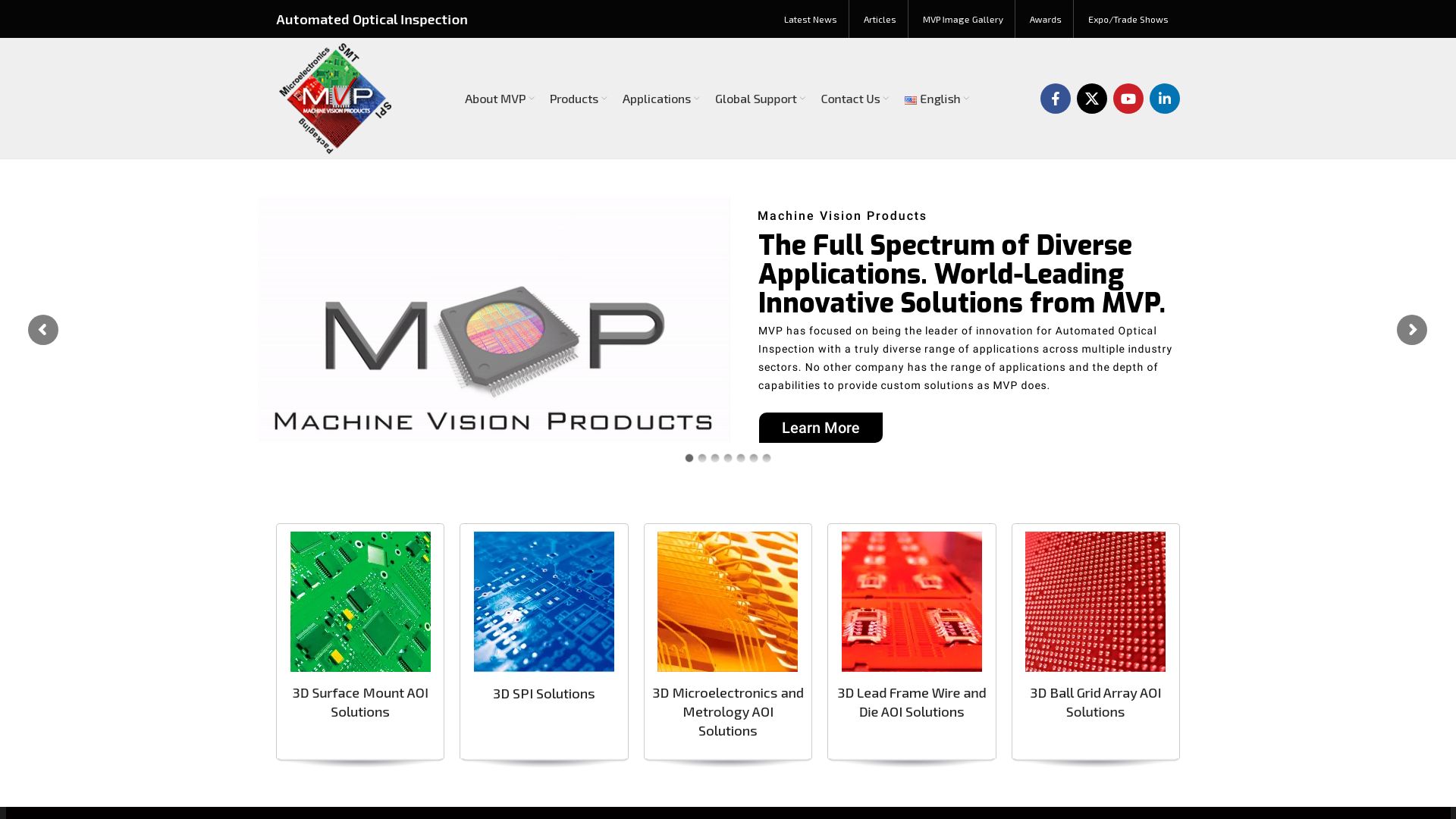
Vision Pro is Apple’s ground-breaking endeavour into the realm of spatial computing, integrating sophisticated AR/VR technology packed into a form resembling ski goggles.
Vision Pro Top Features
- Spatial Functionality: Atomizes workspace, enabling users to scale apps from full-screen to hip-pocket size.
- Immersive Sensory Experience: Incorporates 3D camera for spatial photos/videos, and Immersive Spatial Audio for a lifelike auditory experience.
- Processor and Display: Equipped with Dual-chip processor and 23 million pixel micro-OLED for a resolution better than 4K.
- Ease of Operation: Voice, eye, and hand-controlled; no requirement for additional controllers.
- visionOS: First spatial OS offering expansive and diversified app store functions.
| Feature | Details |
|---|---|
| Multiple Functions | Serves as a standalone computer or a complementary iPad. Also, usable as a 4K external monitor for Mac. |
| Extended Interaction | Includes virtual avatars and uses Precise Eye Tracking to enable simulation of real interactions. |
| Security | Features Optic ID, a unique iris recognition security system. |
Vision Pro Limitations
- External battery lasts only up to 2 hours.
- Dangling cable can hinder mobility due to external battery.
- Cost can be prohibitive for some users, priced at $3,499.
Vision Pro Pricing
The formidable Vision Pro comes with a sizeable price tag, retailing at $3,499. Notably, the brand also offers a pared-down version with fewer features, priced between $1,500 and $2,500.
Vision Pro Use Cases
Use Case 1: Collaboration
Vision Pro is particularly suited to collaborative workspaces, offering seamless connectivity options and virtual avatars for realistic interactions.
Use Case 2: Spatial Computing
With the power of visionOS, Vision Pro converts any space into a high-performance workspace, making it an ideal choice for professionals seeking an immersive computing experience.
Use Case 3: Entertainment
Vision Pro can redefine digital entertainment, transforming any area into a personal theatre with its standout visual and audio capabilities.
Quest 1
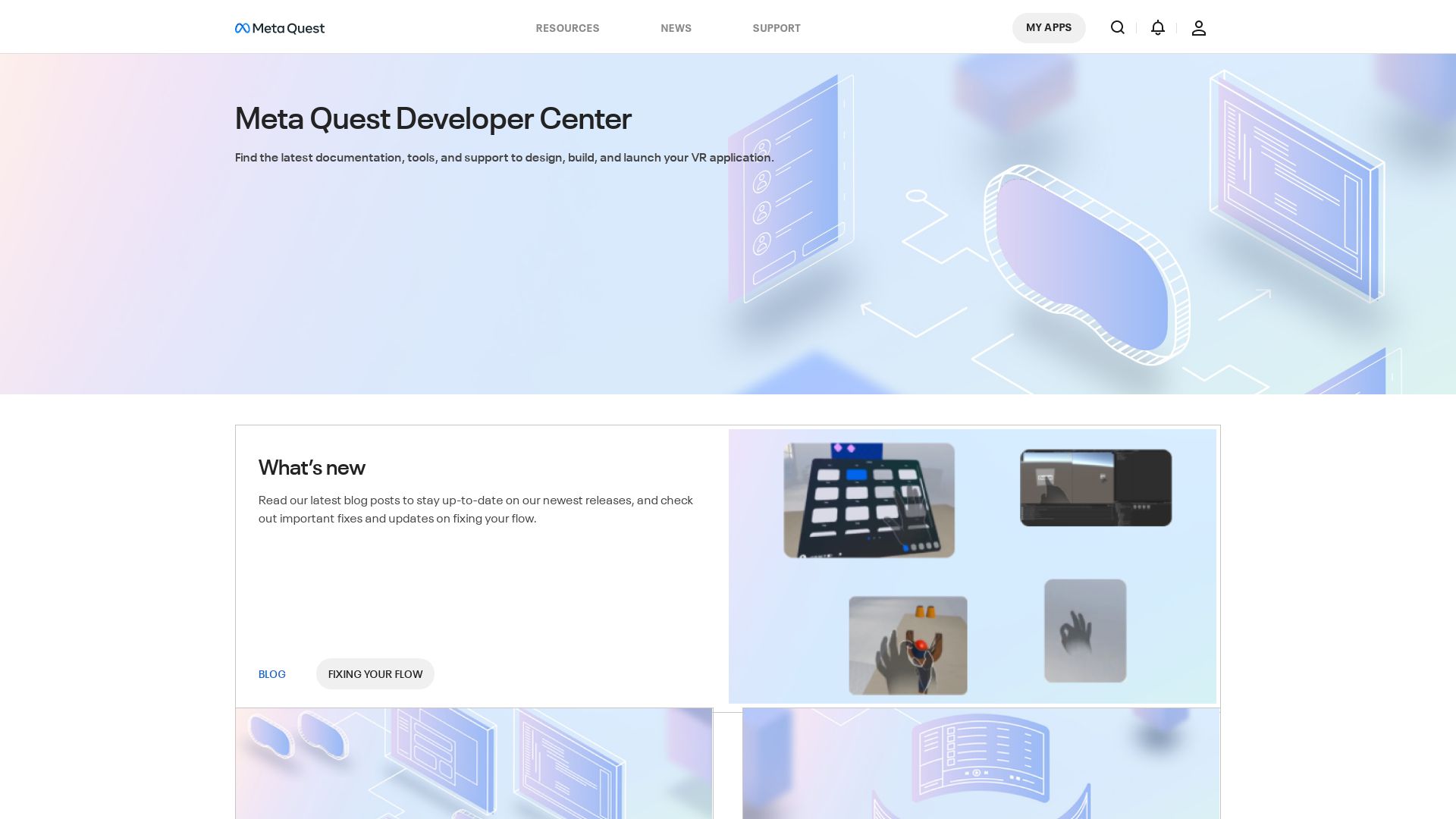
A standout offering from Oculus, the Quest 1 is their fourth consumer VR headset. This headset belongs to the standalone category, requiring no connection to phone or PC, providing a completely wireless VR experience.
Quest 1 Top Features
- Standalone Design: No need for connection to phone or PC.
- Wide-Angle Tracking Cameras: Equipped with four wide-angle tracking cameras.
- Powerful Processor: Powered by Qualcomm Snapdragon 835 mobile chipset.
- Contemporary Aesthetics: Maintains original Rift’s aesthetic with headset body covered in black fabric.
- Storage Options: Storage options of 64GB or 128GB available.
| Rift-Compatible Controls | Includes slightly modified versions of 2016 Oculus Touch design. |
| Adjustable Distance Between Lenses | Features a slider for adjusting the lens distance. |
| Battery Life | Battery offering between two and three hours of use. |
Quest 1 Limitations
- Comfort and Control: Some noted compromises in comfort and control due to the underlying design.
- Catalog Size: Launching with a catalog of around 50 titles, not as extensive as Rift.
- Play Space: Maximum play space is 25 x 25 feet, offering “arena-scale” VR.
Quest 1 Pricing
Unit is priced competitively at $399.99 USD, targeting a broad range of consumers.
Quest 1 Use Cases
Use case 1
With advanced touch-free control and hand tracking, it is useful for immersive gaming experiences.
Use case 2
Those favoring a seamless, standalone VR experience will find Quest 1 especially enticing.
Use case 3
For users with space restrictions, “arena-scale” VR offered by Quest 1, using a sizable 25 x 25 feet play space, will be an appealing feature.
Pico 4
Unleashed by ByteDance in 2022, the Pico 4 VR headset is touted for its “balanced design, comfort, vivid and immersive VR experience”. Compact yet robust, it aims to revolutionize VR experience.
Pico 4 Top Features
- Qualcomm Snapdragon XR2: Improved performance and efficiency.
- 8GB LPDDR4 RAM: Enhanced memory capacity for the standard Pico 4 model.
- Motorized, automatic interpupillary distance adjustment: ensures optimal visual comfort.
- PICO OS 5.0: Powers Pico 4 facilitating smoother and immersive experience.
- Pancake lenses: Leads to weight and volume reduction while improving overall image quality.
- Positioning system SLAM omnidirectional: Improves headset, controller tracking, positioning.
- 360° stereo speakers with 3D spatial sound: Offers immersive audio experience.
| Dimension: 163mm x 80mm, adjustable length 255-310mm | Displays: 2 Fast-LCD displays, over 2K resolution per eye |
| Weight: 295g without strap, 586g with accessories | Field of View: 105° |
| Lenses: Uses Pancake lenses | Controllers: Haptic motion, realistic tactile feedback |
Pico 4 Limitations
- Limited game library: Critiqued by NookGaming. Limited titles available for Pico users.
Pico 4 Pricing
Retailing at €429 on Amazon and XRshop, the Pico 4 delivers top-notch VR experience at competitive price.
Pico 4 Use Cases
Use Case 1 – VR Enthusiasts
With its balanced design, improved memory, and performance, VR enthusiasts will find Pico 4 a worthy investment for a smoother and immersive virtual experience.
Use Case 2 – Businesses
With the Pico 4 Enterprise variant featuring LPDDR5 RAM, businesses can leverage this hardware for interactive and immersive presentations or trainings.
Use Case 3 – VR for Entertainment
Featuring 360° stereo speakers with 3D spatial sound, Pico 4 elevates home entertainment, intensifying gaming and movie experiences.
Vive
Step into the immersive world of VR with Vive – a premium headset crafted by the dynamic duo, Valve and HTC. Created for tech-gurus and intense gamers ready to transcend reality.
Vive’s Top Features
- High-resolution screens: Enjoy the best view in town with the highest resolution screen featured by the Vive Pro 2.
- Freedom of movement: Dance or duel freely within a 15 x 15-foot room, all thanks to its room-scale tracking and laser system.
- Bonus games: Get the party started quickly with bonus games included in pre-orders. Now, that’s what we call a ‘warm’ welcome!
| Spec | Detail |
|---|---|
| Controllers | Vive’s specially designed controllers, best paired with Valve Index Controllers for comfort and accurate tracking. Perfect for handing out virtual thrashings! |
| Audio | On-ear headphones included, but can be replaced with USB-C headphones. All the better for hearing opponents creep up on you! |
| Content Library | Enjoy native access to HTC Vive’s vast content library, a gateway to countless adventures. |
Vive’s Limitations
- While Vive enchants with high-end tech, it requires a similar level PC for the optimum experience, which can be an additional cost of around $1,000. So, not necessarily the best for shoe-string gamers or college students, who might have to live on ramen for a year.
- The stick controllers might feel awkward for some; however, are greatly improved with Valve Index Controllers. A bit like going from chopsticks to a fork if you are not a sushi connoisseur.
Vive Pricing
The Vive headset comes with a price tag of around $799. A worthy expense for superior immersion, unless you fancy a VR holiday to an instant noodle island!
Vive Use Cases
Use case 1: Hardcore Gamers
With high-resolution graphics, responsive controllers, and an expansive game library featuring hits like Half-Life: Alyx and Beat Saber, Vive is paradise for gamers yearning for an unparalleled VR conquest.
Use case 2: Tech Enthusiasts
Whether it’s VR and laser tracking system or the compatibility with high-end computers, Vive is an excellent pick for all tech enthusiasts keen on dabbling with advanced gizmos.
Use case 3: VR Developers
Aspiring wizards of virtual worlds, look no further! With its colossal content library and premium technology, Vive offers incredible possibilities for VR developers aiming to weave immersive experiences.
Quest 2
Unveiled by Reality Labs, a subsidiary of Meta Platforms, the Quest 2 or Meta Quest 2, is a precision piece of VR hardware that’s been impressing since its launch on October 13, 2020.
Quest 2 Top|Best Features
- High-quality display: Boasting an RGB LCD display with a resolution of 1832 x 1920 per eye, and refresh rates ranging from 72-120Hz.
- Remarkable inputs: 6DOF inside-out tracking, courtesy of four built-in cameras and two specialized controllers.
- Bang-for-buck: With an Android-based Quest system software (currently at Android 12.1), it’s not restrained to just PC performance.
| Processor | Memory |
|---|---|
| Qualcomm SnapDragon XR2 | 6 GB LPDDR4X |
| Internal Storage | Weight |
| Divided into 64 GB, 128 GB, or 256 GB options | A rather light 503 g (17.7 oz) |
Quest 2 Limitations
- Battery life: Sustaining just between 2-3 hours runtime on a full charge.
- Meta accounts: Restricted for users aged 10 or more on Quest 2 and 3.
- No room for storage expansion: While the base 64GB storage option expanded to 128GB, there’s no inlet for storage expansion.
Quest 2 Pricing
The Meta Quest 2 offers palpable value- Ranging at a competitive $299 for the 64 GB model, and stretching to $399 for the 256 GB rendition.
Quest 2 Use Cases
Use case 1
With its impressive display and robust processing power, the Quest 2 excels in providing immersive gaming experiences, backed by an extensive game library through the Quest Store.
Use case 2
A standalone feature makes the Quest 2 an ideal choice for users keen to taste VR without the limitations or cost of a high-performance PC.
Use case 3
The Quest 2, with its hand tracking controllers, empowers developers and small businesses to innovate and build interactive prototypes without the need for complex setups.
Quest Pro
The Meta Quest Pro is an advanced VR/AR headset built primarily for enterprise users with a particular emphasis on seamless workflows integration.
Top Features of Quest Pro
- Sleek and professional design with a glossy black front panel.
- Comfortable head strap integrating full padding.
- Five cameras including three front-facing and two side-facing.
- Two sets of charging kits for enhanced usability.
- Redefined and lightweight motion controllers including rechargeable batteries and charging via cradle.
- High-performance Snapdragon XR2+ processor, 50% stronger than Quest 2.
- Resolutions up to 1,920 x 1,800 pixels per eye with an improved color gamut.
| User Experience | Includes a full-color pass-through camera, eye tracking calibration, and a guardian system for conceptual usage. |
| Software | Employs the Meta Horizon Worlds software, providing a set of custom interfaces for collaborative work. |
| Specs | Packs a Snapdragon XR2+ processor, 12GB RAM and 256GB of storage, providing high-performance immersive experiences. |
Quest Pro Limitations
- Higher cost compared to other VR/AR devices, making it more suitable for professionals rather than average consumers.
- Limited user-facing software that leverages the advanced capabilities of Quest Pro.
- The pressing headset might be uncomfortable for long-term usage, although an optional full light blocker accessory is available for increased comfort.
Quest Pro Pricing
The Meta Quest Pro is priced at $1499.99, approximately three times the price of the Meta Quest 2. This establishes the device as a premium option for professionals and businesses requiring high-end VR/AR solutions.
Quest Pro Use Cases
Use Case 1: Professional VR/AR Users
Quest Pro’s advanced features and software capabilities make it best suited for professionals. It fits the bill for those seeking sophisticated VR/AR tools for their business operations and workflow integrations.
Use Case 2: Gaming Enthusiasts
Even though it’s mainly designed for professionals, avid gaming enthusiasts who don’t mind the higher price point could benefit from Quest Pro’s superior performance and immersive gaming experiences.
Use Case 3: Collaborative Work
Equipped with custom interfaces for collaborative work on the Meta Horizon Worlds software, the Quest Pro is incredibly popular in workplaces requiring immersive and cooperative VR experiences.
Vive Pro 2
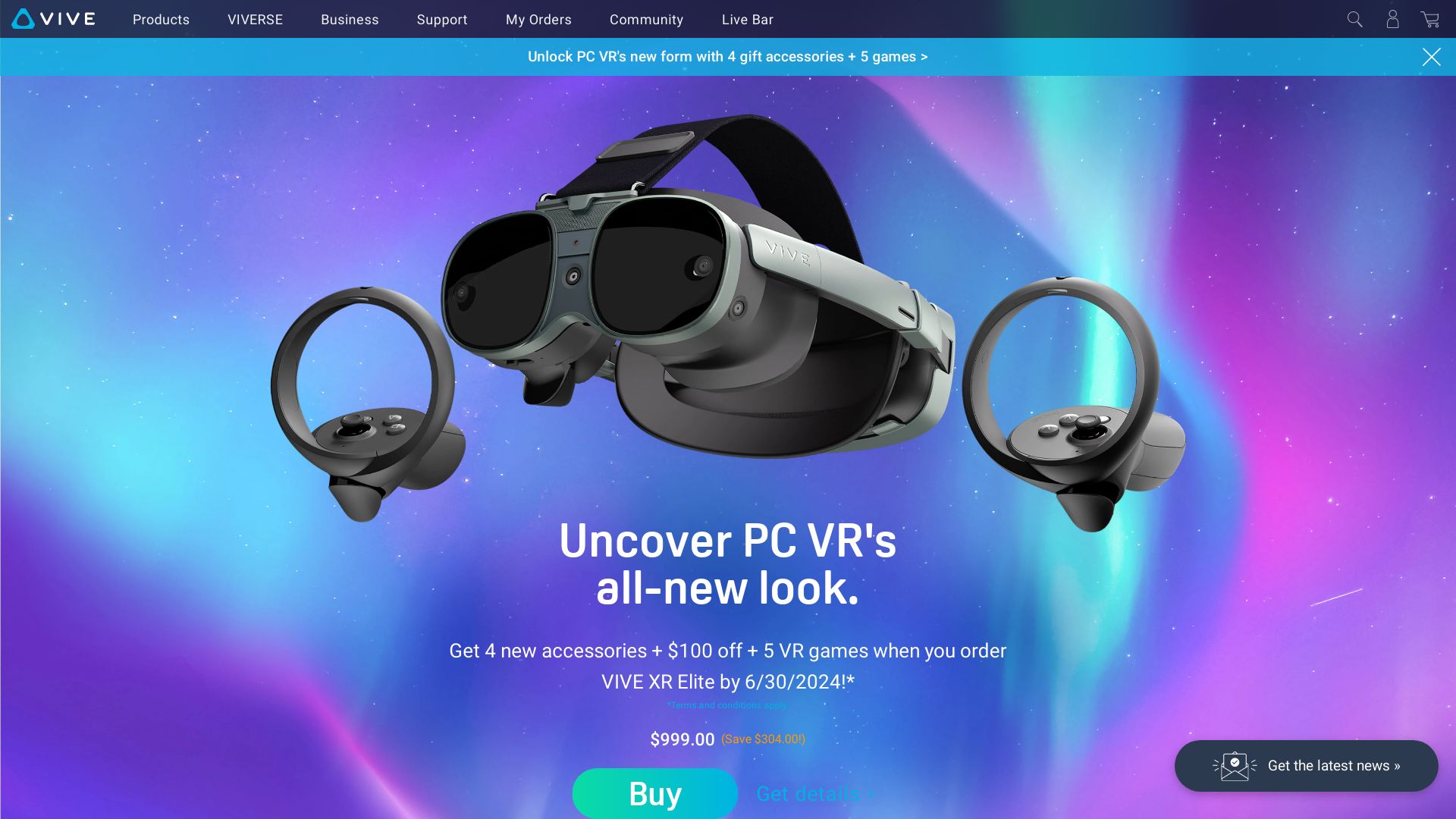
Immerse yourself in riveting AR/VR experiences with the smooth, defined precision of the Vive Pro 2, augmented by a complimentary 2-month Viveport Infinity membership.
Vive Pro 2’s Best features
- Sharp, interactive AR/VR headset – For advanced, immersive experiences.
- Integration with three.js – A flexible, cross-browser JavaScript library for animated 3D computer graphics.
- GPU-accelerated 3D animations powered by JavaScript – High-speed, quality animation without the need for proprietary browser plugins.
- Wide selection of effects and animation options – Anaglyph, armatures, morph, keyframe animation, different materials, and a broad spectrum of light effects.
- Supports various objects and geometries – Meshes, particles, cubes, spheres, 3D text and more!
| Additional Features | Advantages |
|---|---|
| Over 1700 GitHub contributors | Continuous improvements and developments. |
| Extended support through forums and wikis | Easy problem-solving and access to a community of users. |
| Over 150 coding examples | Better understanding and learning for newcomers. |
Vive Pro 2 Limitations
- Platform dependency – Originally developed in ActionScript for Adobe Flash, ported to JavaScript in 2009.
- Incomplete API documentation – API documentation is still under construction.
Vive Pro 2 Use Cases
Use case 1: Gamers
For gamers looking for heightened immersive experiences, Vive Pro 2’s sharp, interactive AR/VR headset paired with a host of 3D graphics and animation options offers an unprecedented gaming experience.
Use case 2: Developers
Developers appreciate Vive Pro 2 for its open-source platform and integration with three.js, a flexible JavaScript library perfect for tweaking 3D computer graphics. Plus, a large community of developers on GitHub.
Use case 3: Educators
Educators find value in the range of coding examples provided by Vive Pro 2. These resources foster better understanding, making it a fantastic tool for teaching coding and graphics.
Vive Pro
Immerse yourself in alternate realities with the Vive Pro 2 Headset. Known for its seamless integration with Three.js, a powerful JavaScript library, Vive Pro enables artistic creation with a technological beating heart.
Vive Pro Best Features
- Immersive Experience: Offering unsurpassed experience, the Vive Pro 2 Headset is your key to the world of virtual discovery.
- Viveport Infinity Membership: Enjoy 2 months of unparalleled access, complimenting the Headset purchase.
- Three.js Integration: Unlock the power of 3D computer graphics in web browsers with the award-winning Three.js library.
| History | Contribution |
| First GitHub Release | Ricardo Cabello, April 2010 |
| WebGL Renderer | Branislav Uličný |
| Geometry Generation Post-WebGL 1.0 | Joshua Koo |
Vive Pro Limitations
- While Three.js features extensive resources, its API documentation is still under construction.
- The headset, though of high quality, may not suit all consumers’ budget.
Vive Pro Use Cases
Use Case 1: Gaming Enthusiasts
With its unparalleled immersion and high-resolution graphics, Vive Pro is an ideal companion for avid gamers.
3D Art Content Creators
Dive deep into virtual landscapes and paint your virtual reality dreams with Three.js integration.
Developers
Develop cutting-edge web applications with high-quality graphics powered by Three.js.
HP Omnicept
HP Omnicept is an advanced VR headset that comes equipped with enhanced sensors and cutting-edge technologies, making it a next-level enterprise-focused device. Retaining core features of the reputed Reverb G2 headset, it boasts a range of updates primarily in eye, mouth, and heartbeat tracking.
HP Omnicept Top Features
- Exceptional resolution of 2160×2160 pixels per eye with a refresh rate of 90Hz, ensuring an adaptive and immersive user experience.
- Enterprise-grade privacy with sensor data not being stored on the headset and full GDPR compliance.
- Features a sophisticated strap tightening mechanism, upgrading the user comfort.
- Equipped with off-ear headphones and a microphone, along with pass-through cameras.
- Detailed biometric tracking including an eye-tracking API, Lower Face Camera API, and Heart Rate API, among others in the higher-tier Enterprise model.
| Connectors Included | Software Layer |
|---|---|
| USB-C, DisplayPort, Power, 6m cable for tracking | Omnicept software to interpret sensor data |
| Dimensions & Specifications | Additional Features |
| Superior height, width, volume, and number of cameras than industry average | Adjustable lenses, 3D spatial audio, Snapdragon XR2 Gen 2 platform, camera for mouth movement capture |
HP Omnicept Downsides
- Biometric data’s high complexity might require advanced understanding and resources for accurate interpretation and leveraging.
- Software deployment is chargeable with one-time licenses for in-house solutions, potentially adding to costs.
- Limited to a 90Hz refresh rate which might not meet the requirements of applications demanding higher refresh rates.
HP Omnicept Pricing
The HP Omnicept is priced at $1,250, and it also extends a revenue-sharing model for developers.
HP Omnicept Use Cases
Enterprise Training
By integrating advanced sensor data with AI, HP Omnicept creates dynamic and immersive experiences for superior training methodologies.
Well-Being
HP Omnicept’s heart rate tracking can integrate with well-being apps to monitor and manage user’s health during VR experiences.
Creation and Collaboration
HP Omnicept’s top-notch specifications and adjustable lenses create a platform for budding creators and enhances collaboration in enterprise settings.
Pimax Crystal
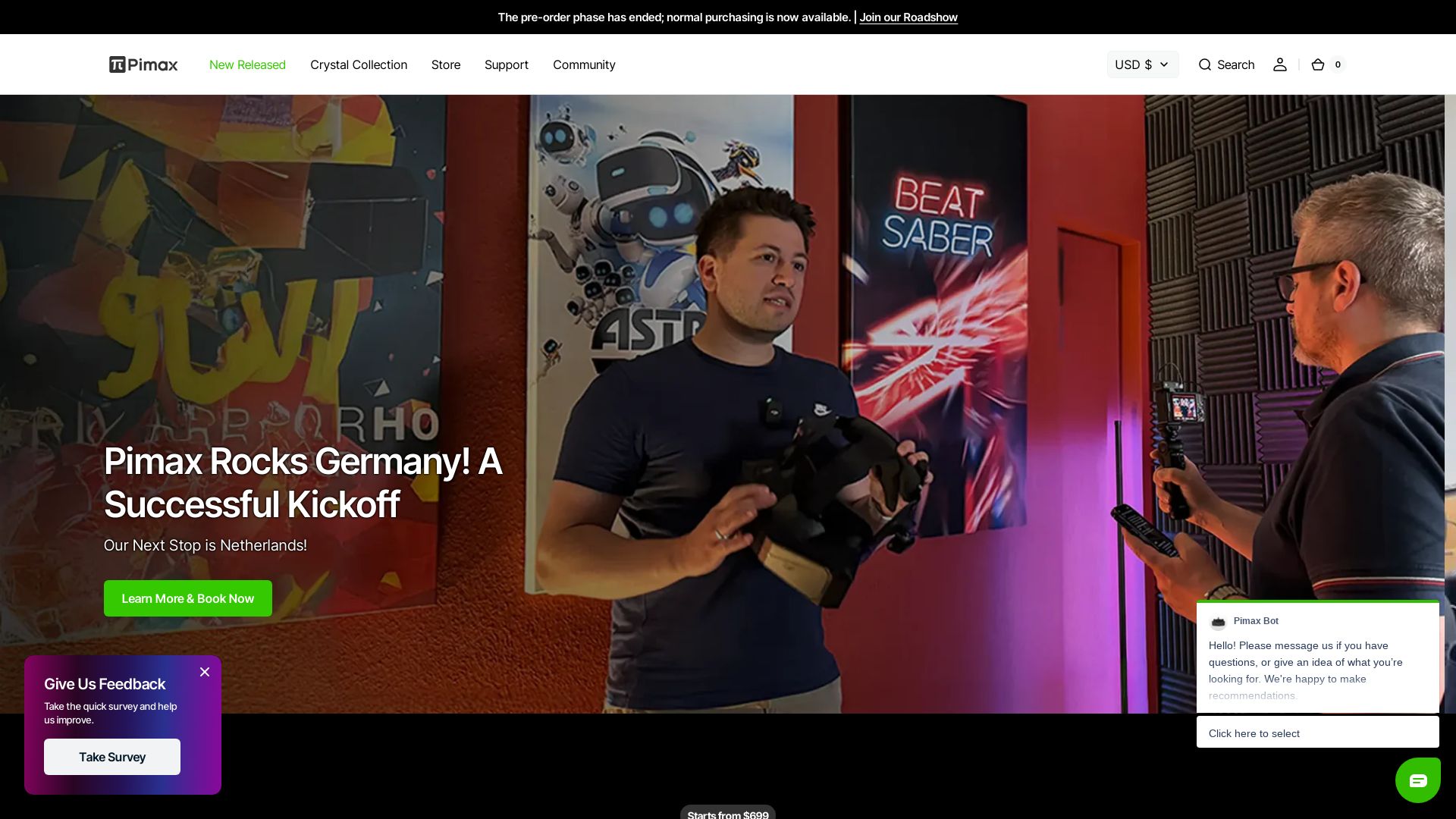
A market leader in VR technology, the Pimax Crystal is an ultra-clear VR headset that boasts the highest resolution of any VR headset, 5760 x 2880 pixels and the highest Pixels-Per-Degree (PPD) of any consumer headset, 35 PPD.
Top Features of Pimax Crystal
- High-resolution: Offering the highest resolution of any VR headset at 5760 x 2880 pixels.
- Highest PPD: Pimax Crystal has a Pixels-Per-Degree (PPD) of 35, the highest of any consumer headset.
- Mini-LED backlight: Featuring QLED+Mini LED panels, the headset provides local dimming for enhanced contrast, ensuring brighter whites and deeper blacks.
- Multiple VR modes: Enjoy the flexibility to shift between PCVR and XR2 powered Standalone mode.
- Eye-tracking: Benefit from a high-quality eye tracking system at 120 Hz, including a performance-enhancing dynamic foveation system, auto IPD, and headset positional guidance systems.
| Hardware | Dimensions |
|---|---|
| Qualcomm Snapdragon XR2, Pimax PCVR Engine, 8+256GB | 280.10mm*108.20mm*135.90mm |
| Recommended OS | Weight |
| Windows 10/ Windows 11, GPU: Nvidia GeForce RTX 2070 and above | 126g |
Limitations of Pimax Crystal
- Comfort: Some users have reported issues with comfort.
- Streaming: Standalone/streaming are not operational yet.
- Hand Tracking: Hand tracking in SteamVR can be problematic.
- Setup: Users may encounter setup issues.
Pimax Crystal Pricing
Priced at $1,599, or alternatively, you can pay in installments of $73.79 per month over 24 months.
Pimax Crystal Use Cases
Use Case 1: Gamers
The Pimax Crystal, with its high resolution and extensive features, offers an immersive and realistic gaming experience.
Use Case 2: VR Enthusiasts
With a high PPD, adaptive Pimax PCVR Engine and top-notch visuals, it’s a standout choice for those passionate about virtual reality.
Use Case 3: Professionals
For professionals who seek precision and clarity in their VR experiences, the Pimax Crystal, with its high resolution and advanced tracking systems, makes a viable option.
PSVR 2
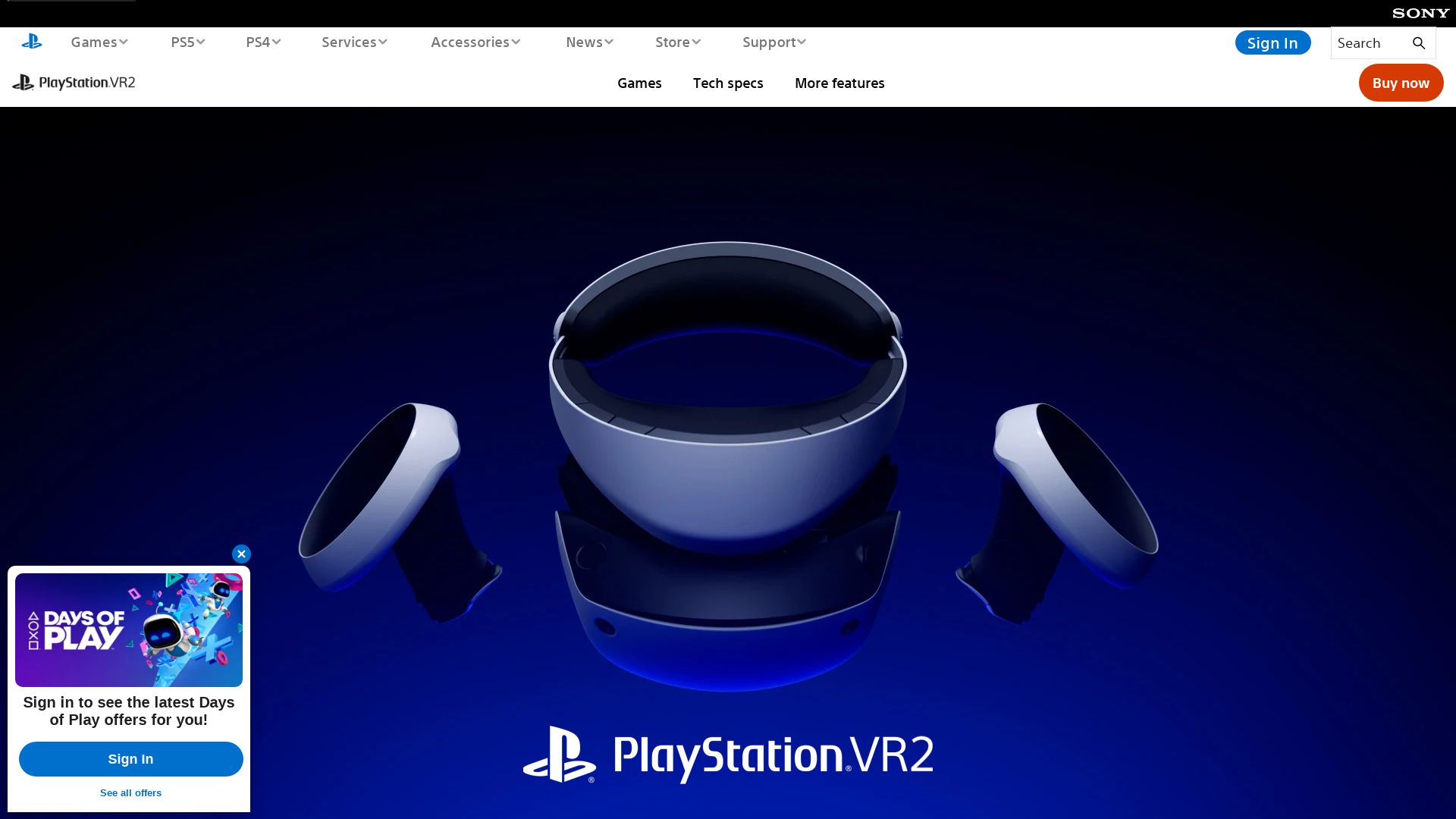
Embrace the power of PSVR 2, Sony’s next-generation VR hardware. This VR titan soars with upgraded specifications, comfort enhancements, and immersive offerings, even though it demands a significant investment.
PSVR 2’s Top Features
- Significant resolution upgrade: 2000 x 2040 per eye, delivering sharp and vibrant visuals.
- Renovated controllers: Sense controllers replace old Move versions, promoting superior accuracy and interaction.
- Improved comfort: Adjustable lenses, sturdy headband, and movable lens module cater to personal comfort.
- Eye-tracking: Sublime feature opening a myriad of possibilities in interactivity and immersion.
| Included | PSVR 2 Sense Controllers, headset feedback, adaptive triggers, eye tracking |
| Connectivity | Single USB-C input for convenient setup |
| Experience | Better performance than Meta Quest 2, supports HDR, automatically streams VR user view to TV |
PSVR 2 Downsides
- High cost: Commands a princely sum of $549.99/£529.99.
- Requires PlayStation 5: Restricts access to owners of the specific console and raises entry cost.
- Limited game library: Not backward compatible with PSVR 1 titles, small pool compared to Steam or Meta.
PSVR 2 Pricing
The PSVR 2, a premium VR offering, commands a high price of $549.99/£529.99. This does not include extras such as the Sense Controller Charging Dock and Pulse Headset, which inflate the overall investment.
PSVR 2 Use Cases
Competitive Gamers
With its enhanced resolution, refined input from Sense controllers, and enticing VR exclusives, competitive gamers will savor the PSVR 2’s immersive battleground.
VR Enthusiasts
Eye-tracking and vivid HDR support promise profound immersion for VR enthusiasts seeking the cutting edge in VR hardware.
Media Consumers
With the seamless streaming feature to TV, PSVR 2 becomes a delightful choice for those desiring a group VR shared experience.
Hannah Stewart
Content writer @ Aircada, tech enthusiast, metaverse explorer, and coffee addict. Weaving stories in digital realms.




